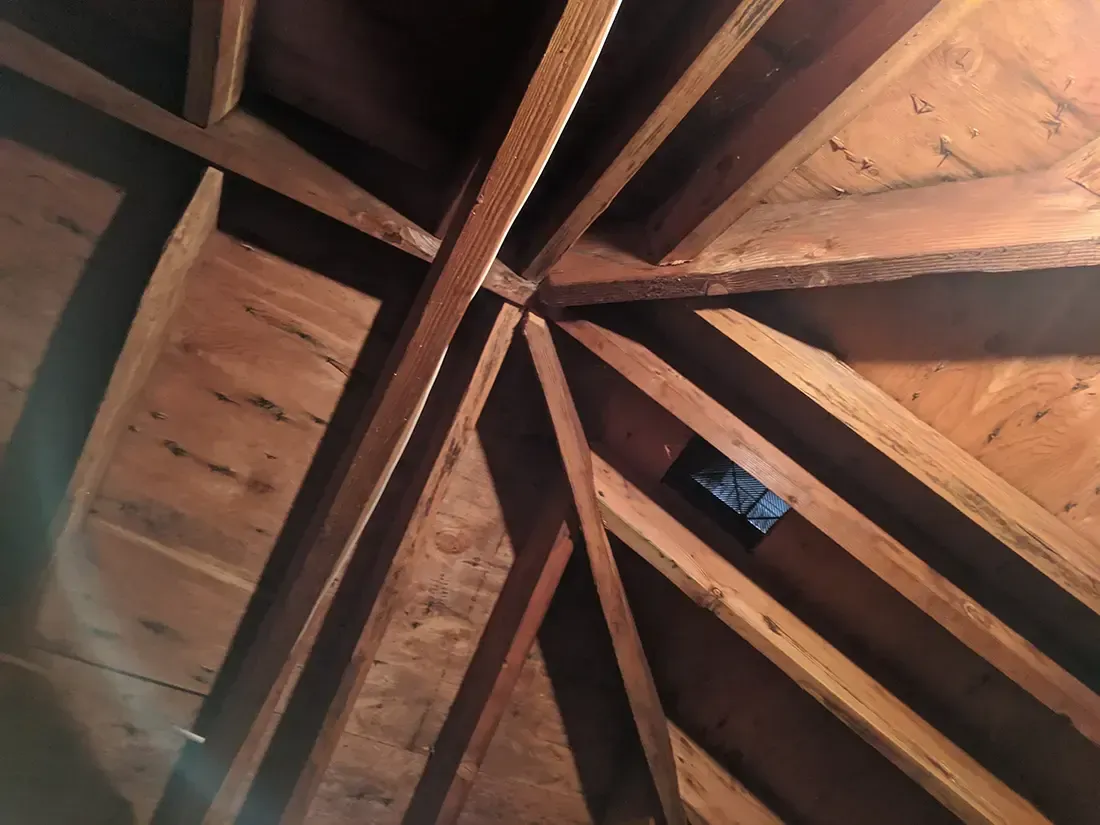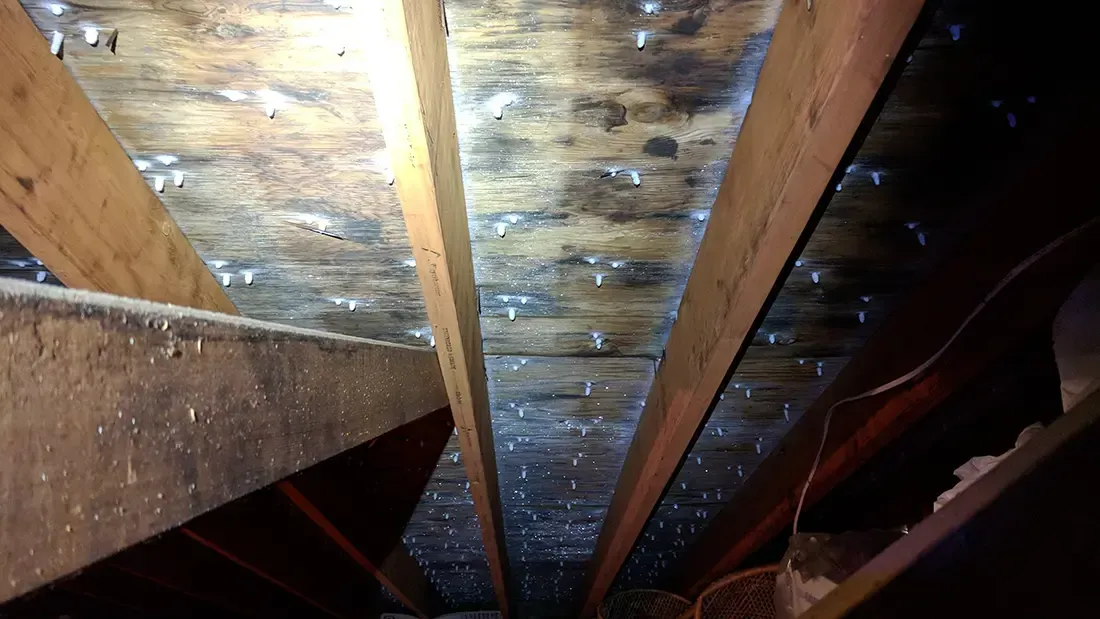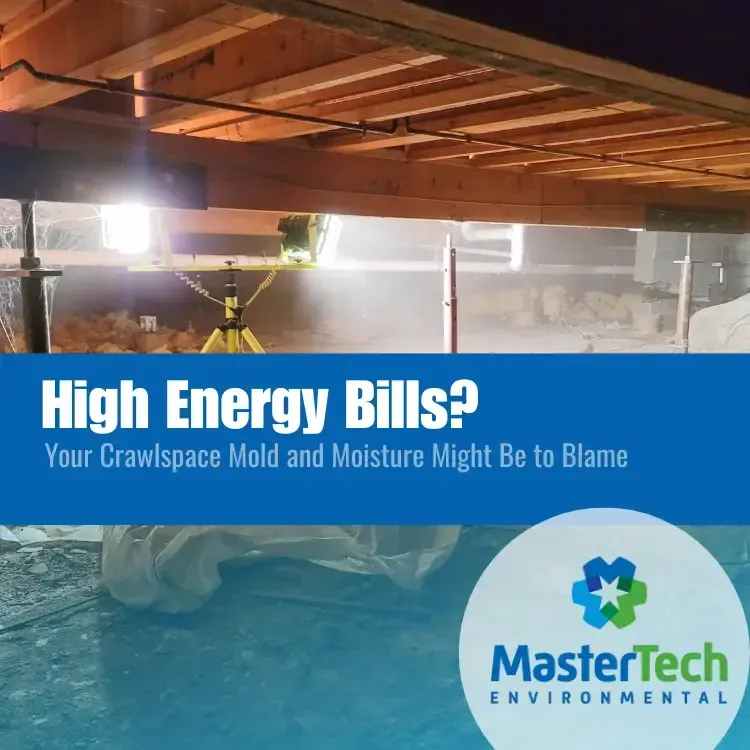Is Mold in My Attic Bad?

Few homeowners ever consider their attic until they notice an odd smell drifting downward or strange stains appearing on the ceiling below. If you're seeing these subtle hints of trouble, it's completely understandable to feel a surge of anxiety. Mold isn't just an annoying eyesore or minor inconvenience; attic mold can impact your family's health and weaken your home's structural integrity, creating lasting issues that are often underestimated.
Confronting attic mold promptly matters greatly, especially in humid climates like Myrtle Beach, where moisture-related mold issues are prevalent. You might initially feel overwhelmed, particularly because attic spaces often seem inaccessible, confusing, or even intimidating. Understanding exactly how attic mold occurs, why it's uniquely problematic compared to other home mold, and precisely what to do about it ensures you're equipped with the right knowledge to take effective action.
Why Attic Mold is Uniquely Different (and Often Worse) Than Mold Elsewhere in Your Home
Many homeowners assume attic mold is essentially the same as bathroom mold or basement mold—but that's a dangerous misunderstanding. Unlike these spaces, attics typically don't suffer direct water exposure from showers, sinks, or groundwater seepage. Instead, attics create their own problematic environment through subtler issues, such as trapped humidity, poor ventilation, or tiny, unnoticed roof leaks. These quiet yet constant sources of moisture slowly encourage mold to develop unnoticed over time.
Because attics aren't spaces you visit regularly, mold can flourish for months—or even years—without detection. This prolonged, unchecked growth means attic mold infestations are often far more extensive by the time they're discovered. The mold colonies establish themselves deeply into porous surfaces, embedding into wood beams, roof decking, insulation, and structural supports, creating complications that extend beyond simple cleaning.
Specific Causes of Attic Mold Growth
· Poor Ventilation and Blocked Soffit Vents: Attics depend on effective ventilation systems, typically passive vents along soffits and roof ridges, to keep air circulating and moisture levels down. Blockages from debris, bird nests, or poorly installed insulation trap humid air inside, causing consistent condensation that directly encourages mold growth.
· Exhaust Fans Vented into the Attic: Bathroom or kitchen exhaust fans improperly vented into the attic release moisture-heavy air directly into an enclosed space. Instead of moisture dissipating outdoors, the damp air condenses on cool attic surfaces, promoting mold rapidly.
· Inadequate or Missing Attic Insulation: Gaps, uneven insulation layers, or completely missing insulation allow warm, humid air from living areas to seep into your attic. This escaping moisture-rich air condenses against cooler roof surfaces, continuously creating ideal conditions for mold growth.
· Roof Leaks and Water Intrusion: Small leaks around chimney flashing, damaged shingles, or deteriorated roofing materials allow water to infiltrate slowly but steadily, providing direct, consistent moisture for mold to thrive.
· HVAC or Plumbing Leaks in Attic: HVAC ductwork or plumbing lines running through attic spaces can leak or drip condensation, steadily providing moisture to hidden attic areas.
Because these problems are subtle and incremental, many homeowners don't recognize attic mold until significant damage has already occurred. The critical importance of identifying these underlying conditions early underscores why a professional attic mold inspection, equipped with advanced tools like thermal imaging, moisture meters, and air sampling equipment, is far superior to basic home inspections that might overlook these precise problems.
Early Signs Your Attic Might Have Mold
Attics are rarely part of routine checks by homeowners, often considered dusty, inconvenient places visited only for storage or rare repairs. By the time mold is visibly apparent, extensive damage may already have occurred. Fortunately, there are earlier signs you can detect without entering your attic that signal potential mold issues, letting you act before it worsens.
Health Symptoms
Subtle, unexplained health symptoms are often overlooked, dismissed as seasonal allergies or common colds, but they can be a direct indication of hidden attic mold. Mold spores circulating quietly through your home's ventilation system trigger persistent allergic responses. Symptoms include chronic sneezing, coughing, runny noses, watery or itchy eyes, persistent headaches, and worsening asthma episodes. Vulnerable individuals like children, seniors, or those with compromised immunity may experience intensified reactions, with symptoms notably improving upon leaving the home temporarily.
Musty Smell and Visual Clues From Below
Mold's characteristic musty, earthy odor often emerges before visible evidence does. Homeowners commonly describe it as reminiscent of wet newspapers, old basements, or damp, unwashed clothes left too long. If you regularly notice this scent, especially intensifying after rains or humidity spikes, your attic likely hosts a hidden mold issue.
Additionally, subtle visual signs might appear in rooms directly below your attic. Small water stains, paint bubbling or peeling, or slight discolorations on ceilings can indicate moisture or mold damage directly above. Observing these signs, even if minor, is a crucial prompt to seek professional mold inspection immediately.

The Real Dangers of Ignoring Attic Mold
Ignoring attic mold often stems from understandable concerns about high remediation costs or uncertainty about the severity of the problem. Unfortunately, delays only escalate risks to both your family's health and your home's structural integrity. Attic mold isn't a benign issue—it's a pressing and escalating problem that demands immediate attention.
Health Implications
· Chronic Respiratory Issues: Long-term inhalation of mold spores can cause or exacerbate respiratory conditions, triggering or worsening asthma attacks, sinusitis, chronic bronchitis, and even potentially serious conditions like aspergillosis or mold-related pneumonia.
· Persistent Allergy Symptoms: Mold exposure perpetually stimulates allergic reactions, causing ongoing discomfort and significantly reducing your family's overall quality of life.
· Vulnerability in Sensitive Populations: Young children, elderly family members, and immune-compromised individuals can experience severe symptoms with long-lasting impacts on overall health.
Structural Risks Specific to Attics
· Rapid Wood Rot and Structural Decay: Mold breaks down attic wood structures, causing severe weakening of beams, roof decking, and supports. This degradation can lead to costly structural repairs or even a complete roof replacement if left unaddressed for too long.
· Roof Damage and Costly Repairs: Persistent moisture and mold conditions significantly shorten your roof's lifespan. Ignored leaks and mold issues quickly evolve from minor inconveniences into major structural concerns requiring substantial financial investment.
· Reduced Home Value: Homes with documented mold issues often lose resale value significantly, making proactive inspection and remediation critical for protecting long-term financial investments.
A detailed professional attic mold inspection, utilizing advanced equipment such as thermal imaging cameras and moisture mapping tools, is essential to identify hidden mold locations accurately, determine the severity of growth, and ensure that the root causes are effectively diagnosed and addressed, far beyond what standard home inspections provide.
Effective Attic Mold Remediation Must Address the Root Cause
One of the most frustrating experiences for homeowners confronting attic mold is addressing visible growth, only to have it return shortly thereafter. If you've felt this aggravation, the reason is clear: mold remediation that ignores root moisture and ventilation issues is inherently temporary and insufficient.
Professional attic mold remediation goes beyond simple cleaning. Experts must first identify moisture sources—such as inadequate ventilation, improperly vented exhaust fans, blocked soffit vents, or roof leaks—before performing removal or encapsulation. Advanced inspections and professional testing clearly identify the mold species, growth locations, and precise moisture sources. With this accurate assessment, remediation experts implement specific repairs or upgrades, such as correcting ventilation deficiencies or improving insulation. Without fixing these root causes, mold inevitably reappears, repeating the frustrating cycle.
Permanent attic mold remediation in Myrtle Beach involves fully addressing hidden moisture issues in conjunction with professional mold removal, ensuring long-term home health and structural safety.
Actionable Steps You Can Take Today
Facing attic mold can feel overwhelming, yet delaying action compounds health risks and structural damage.
· Check for Odors and Visual Signs Immediately: Notice musty smells or ceiling stains? Don't ignore these early warnings.
· Pay Attention to Family Health: Frequent unexplained illnesses, allergy-like symptoms, or breathing issues often signal hidden mold.
Schedule Professional Mold Inspection Immediately: Contact MasterTech Environmental for attic mold inspection in Myrtle Beach. Professionals employ advanced tools and detailed methods that surpass typical home inspections, accurately identifying hidden issues and the causes of moisture.
Protect Your Home and Health from Attic Mold Today
Ignoring attic mold is not an option—your family's health, home value, and structural integrity are at risk. Attic mold remediation isn't merely about cleaning visible mold; it's about thoroughly and permanently addressing the hidden causes.
Contact MasterTech Environmental now at 843-236-3399. Take control by scheduling a comprehensive attic mold inspection and professional remediation in Myrtle Beach—your peace of mind and your family's well-being depend on it.



